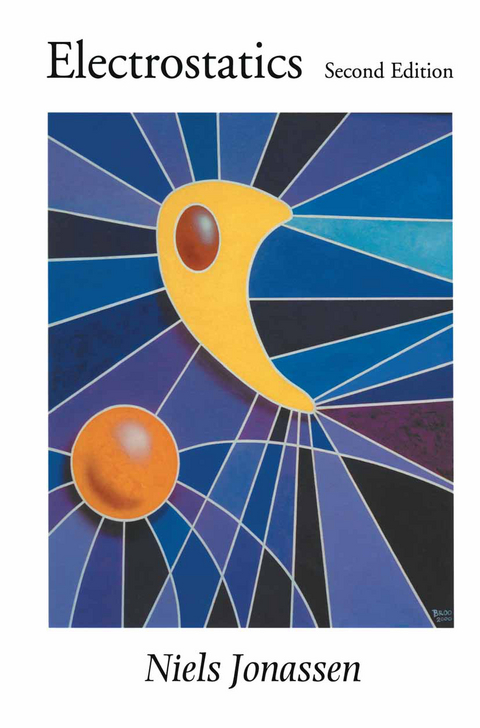
Electrostatics
Springer-Verlag New York Inc.
978-1-4020-7161-4 (ISBN)
Preface to first edition 1997 This book has developed from more that 40 years of work with static electric problems and almost as long a period of teaching courses on electrostatics, primarily at The Technical University of Denmark. Several chapters of the book are hardly more than a brush-up of the general knowledge of most physicists. But with the ever increasing specialization, in today's teaching and research, little attention seems to be paid to simple and basic relations. For this regrettable fact I am grateful. It is my hope that the book may take the newcomer by the hand and also remind the specialist of some basic facts she may have forgotten or perhaps never learned. Preface to second edition This book differs from the first edition by several topics being totally rewritten. This is the case as far as chapters 4, 5, 6 and 8 are concerned. The background for the new versions is to a large extent my contributions to the ESDA (ElectroStatic Discharge Association) symposia and tutorials and especially my articles (Mr. Static) in Compliance Engineering. Most of the figures have been redrawn. A major part has been borrowed from Compliance Engineering, and the permission to do so is gratefully acknowledged.
1 introduction.- 2 Fundamental Concepts.- 2.1 Charge.- 2.2 Electric Field.- 2.3 Electric Flux and Gauss’ Law.- 2.4 Field Strength and Voltage.- 2.5 Charged insulator.- 2.6 Surface Potential of Uniformly Charged insulator Disk.- 2.7 insulated Charged Conductor.- 2.8 Faraday Screening.- 2.9 Potential of Conductor, Capacitance.- 2.10 induction.- 2.11 Polarization.- 2.12 Mobility.- 2.13 Conductivity and Resistivity.- 2.14 Conductance and Resistance.- 2.15 Surface Conductivity and Resistivity.- 2.16 Surface Conductance and Resistance.- 3 Static Electrification.- 3.1 Charging of Solids.- 3.2 Charging of Liquids.- 3.3 Charging of Powders.- 3.4 Charging of Gases.- 4 Decay of Charge.- 4.1 Charge Decay of Capacitive System.- 4.2 Charge Decay of Non-Conductors.- 4.3 Charge Decay through the Air.- 5 Electrical Breakdown.- 5.1 Breakdown in Air.- 5.2 Breakdown in Dielectrics.- 6 Electrostatic Effects.- 6.1 Mechanical Effects.- 6.2 Electrostatic Energy.- 6.3 Electrical Effects.- 6.4 Discharges.- 6.5 Charges on insulators.- 6.6 Charges on Conductors.- 6.7 Explosive Mixtures of Vapors and Gases, Ignition Energy.- 6.8 Explosive Mixtures of Powders and Gases.- 6.9 Explosion-Safe Voltage.- 6.10 Voltage Levels of Charged Conductors.- 6.11 Current Pulses from Charged Systems.- 7 Abatement of Static Electricity.- 7.1 Grounding of Conductors.- 7.2 Methods of Grounding Persons.- 7.3 Neutralization of Charges on insulators.- 7.4 Charge Neutralization by Air Ions.- 7.5 Types of Ionizers.- 7.6 Liquids.- 7.7 Special Precautions.- 7.8 Powder, Dust, Aerosols.- 8 Electrostatic Measurements.- 8.1 Static Voltage.- 8.2 Field Strength.- 8.3 Field Strength and Voltage.- 8.4 Insulators.- 8.5 Resistivity.- 8.6 Charge.- 9 Static Electricity and People.- 9.1 Charging of Persons.- 9.2 Effects of Charges onPersons.- 9.3 Electric Fields and Airborne Particulates.- 9.4 Electric Fields and Ions.- 10 Applications of Static Electricity.- 10.1 Precipitation.- 10.2 Separation.- 10.3 Coating.- 10.4 Flocking.- 10.5 Imaging.- 10.6 Permanent Polarization, Electrets.
| Reihe/Serie | The Springer International Series in Engineering and Computer Science ; 700 |
|---|---|
| Zusatzinfo | IX, 188 p. |
| Verlagsort | New York, NY |
| Sprache | englisch |
| Maße | 155 x 235 mm |
| Themenwelt | Naturwissenschaften ► Physik / Astronomie ► Elektrodynamik |
| Technik ► Elektrotechnik / Energietechnik | |
| Technik ► Nachrichtentechnik | |
| ISBN-10 | 1-4020-7161-2 / 1402071612 |
| ISBN-13 | 978-1-4020-7161-4 / 9781402071614 |
| Zustand | Neuware |
| Haben Sie eine Frage zum Produkt? |
aus dem Bereich


